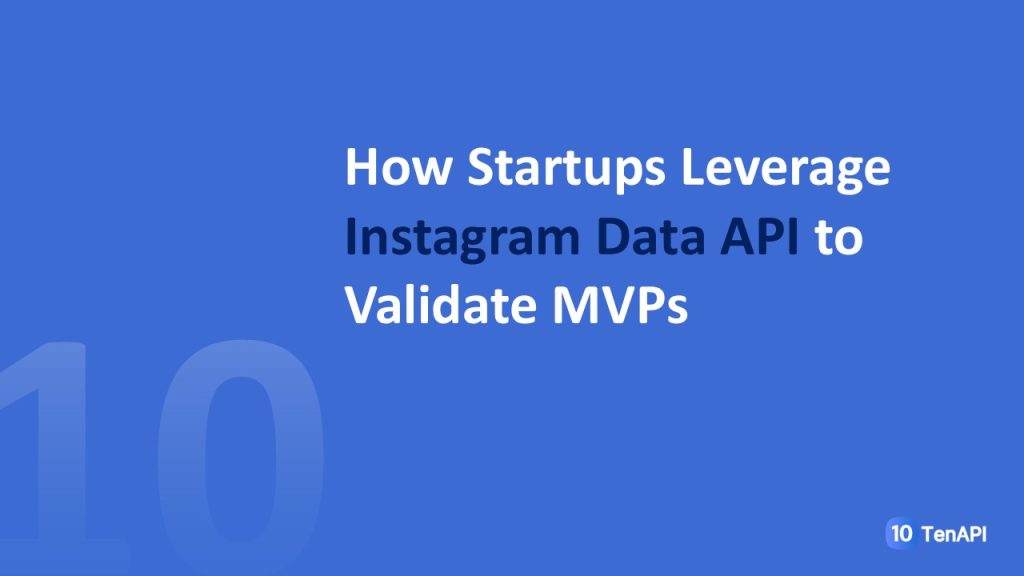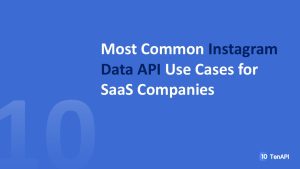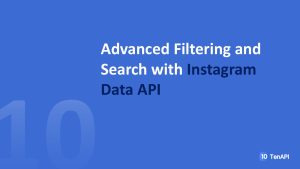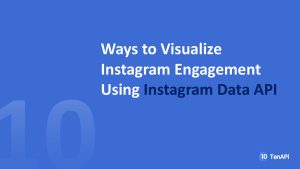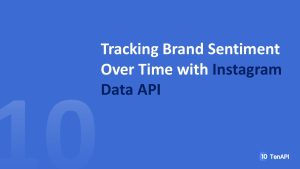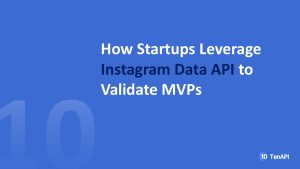Every successful startup begins with a great idea—but not every idea turns into a great product. That’s why validating your MVP (Minimum Viable Product) early is crucial. It helps you avoid building something nobody wants.
Now, imagine having access to millions of users already talking about their problems, preferences, and pain points. That’s exactly what Instagram offers. With its Data API, startups can collect real-time insights, test assumptions, and refine products—all before spending months (or money) on full development.
Understanding the Instagram Data API
What is the Instagram Data API?
The Instagram Data API is a set of tools that allows developers and businesses to access structured data from Instagram—such as user interactions, hashtags, stories, and engagement metrics.
Think of it as a window into what your potential customers care about, discuss, and engage with daily.
Types of Data Accessible via the API
Startups can access various datasets:
-
Hashtags and mentions
-
Post engagement (likes, comments, saves)
-
Audience demographics
-
Content performance metrics
-
User-generated content insights
API Limitations and Permissions
To keep user privacy safe, Instagram restricts certain data points. You’ll need an approved Business Account or Creator Account to gain API access, along with permission from Instagram’s Graph API.
The Connection Between MVP Validation and Data
Validating an MVP means testing your assumptions before scaling. Instead of guessing what users want, you collect evidence.
Traditional surveys are slow and often biased. Instagram data, on the other hand, reflects real conversations, in real time.
Using the API within the Lean Startup framework helps teams build faster: test → learn → pivot → grow.
Key Benefits of Using Instagram Data API for Startups
-
Real-Time Feedback: You can instantly gauge reactions to a product concept or visual prototype.
-
Audience Sentiment: By analyzing comments and hashtags, startups understand emotional responses and pain points.
-
Finding Early Adopters: The API helps you identify the users most engaged with your niche—potential ambassadors or first customers.
Step-by-Step: Using Instagram Data API for MVP Validation
Step 1 – Define Hypotheses
Start with clear assumptions: “People want eco-friendly packaging,” or “Fitness enthusiasts prefer home workouts.”
Step 2 – Collect Data
Use the API to gather posts with relevant hashtags (#sustainablebrand, #homeworkout) and analyze engagement trends.
Step 3 – Analyze Behavior
Find out which ideas generate the most attention. Are people saving more posts about design or functionality?
Step 4 – Test Through Campaigns
Run small Instagram ad tests or influencer collaborations to confirm the hypothesis with real users.
Step 5 – Refine and Pivot
Use engagement data to iterate. If users love one feature more than others, shift focus toward it.
Real-World Examples
Fashion Startup
A clothing startup used Instagram hashtags to monitor interest in sustainable fabrics before producing inventory.
They found high engagement with “#organiccotton,” leading them to focus on eco-friendly lines.
Food Brand
A vegan snack company tested packaging designs by sharing mockups on Instagram and tracking saves and comments. The most engaged design became their final product.
Fitness App
A new fitness platform analyzed which workout hashtags (#HIIT, #yogaflow) had the highest engagement to decide which workout plans to prioritize.
Extracting Actionable Insights
Raw data alone means nothing. The magic happens in interpretation:
-
Engagement metrics tell you what’s popular.
-
Comments reveal emotional depth and qualitative insights.
-
Follower growth and reach show market potential.
By combining these insights, startups can predict trends before they become mainstream.
Tools and Frameworks That Work with Instagram API
To make sense of all this data, startups often use tools like:
-
Google Data Studio or Tableau for visual reports
-
CRM integrations like HubSpot to merge leads and social engagement
-
Automation tools that trigger actions based on Instagram events
These setups help founders make fast, data-backed decisions without getting lost in spreadsheets.
Challenges and Limitations
Yes, the Instagram API is powerful—but it’s not perfect.
-
Rate limits restrict how often you can pull data.
-
Privacy policies mean not every data point is available.
-
Vanity metrics (like likes) can be misleading if not contextualized.
The key is using data as guidance, not gospel.
Best Practices for Startups
-
Focus on patterns, not individual comments.
-
Keep a balance between data-driven and customer-centered thinking.
-
Test small, learn fast, and pivot confidently.
-
Don’t forget human intuition—it’s still your best competitive edge.
Future of MVP Validation with Social Data
The future looks bright. APIs are evolving from static data sources to intelligent insight engines.
With AI and machine learning, startups will soon predict product success before launch, using visual and behavioral data from platforms like Instagram.
Key Takeaways
-
Instagram Data API is a powerful MVP validation tool.
-
Real-time insights save startups from costly mistakes.
-
Combining social data with smart analysis leads to stronger, customer-backed products.
Conclusion
Validating an MVP used to mean running surveys or waiting for beta feedback. But now, startups can listen directly to their audience through social data.
The Instagram Data API provides a shortcut to understanding what people truly want—before writing a single line of production code.
If you’re building something new, don’t build blindly. Let data guide you, and let your audience shape your MVP.
FAQs
1. How can a startup access Instagram Data API?
Startups can register for a Meta Developer account, create an app, and request permissions to use the Instagram Graph API.
2. What types of data are most valuable for MVP validation?
Hashtag trends, engagement metrics, sentiment in comments, and influencer activity are the most useful.
3. Is it ethical to use Instagram data for product research?
Yes, as long as you use public data responsibly and comply with Instagram’s privacy policies.
4. Can Instagram API help with influencer marketing?
Absolutely. It helps identify authentic influencers based on real engagement rather than inflated follower counts.
5. How do you measure MVP success with API data?
Track engagement growth, sentiment improvement, and conversion from Instagram to landing pages or beta sign-ups.

